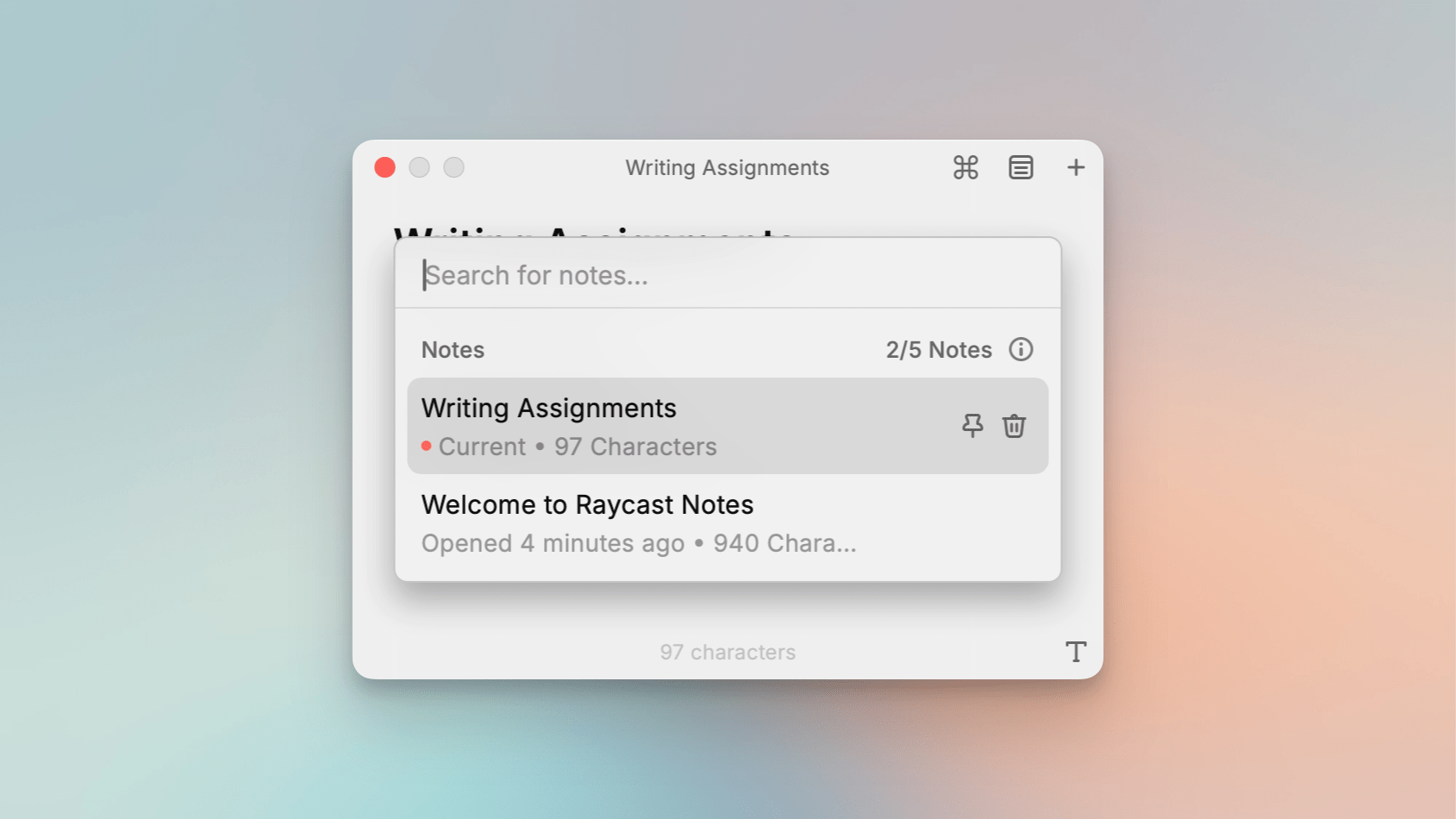Raycast has always been more than an app launcher. From the start, it has included a multitude of other handy utilities, including Floating Notes. I’ve used Floating Notes now and then to park a bit of text where I knew I’d be able to find it later. Because the note floated above other windows, it was easy to access, but Floating Notes always felt a little too rudimentary to use for much more than that.
Today, Raycast released an extensive update to the feature and renamed it Raycast Notes. Your notes still occupy a floating window, but now, the window auto-resizes to fit the content by default. The window’s width is fixed, but you can always resize its height to adjust how much space it occupies on your screen.
You can summon Raycast Notes just like you would any other Raycast feature. Once it’s open, ⌘ + P pops up a note switcher window with a search field and a list of your notes in reverse chronological order. Notes can also be pinned to the top of the list. ⌘ + K reveals various note actions, including:
- creating a new note,
- browsing notes,
- copying a note’s deep link,
- creating a Quicklink that can be easily accessed via Raycast,
- formatting a note using Markdown syntax,
- enabling or disabling the note window’s auto-resizing feature,
- exporting as a Markdown, HTML, or plain text file,
- viewing recently deleted notes, and
- deleting the current note.
The same actions, plus note browsing and creation, can be accessed from the window’s toolbar.
That’s a nice set of options, although it’s a shame that a note’s text can’t be sent to other apps via the Share menu and that exporting a Markdown formatted file uses the .txt extension instead of .md. Still, it’s an excellent feature, and I appreciate that if I copy text from a note, it pastes as Markdown text in Obsidian but as properly formatted rich text in apps like Notes.
I’ve only played around with Raycast Notes briefly, but I like what I’ve seen. It has the potential to be an excellent inbox for ideas, links, and other bits of text you come across during your day. I can also see Raycast Notes as a good place to store template text you need repeatedly. It’s definitely a feature I plan to experiment with more to see where it fits into my workflows.
Raycast Notes is available to free and paid Raycast users. Free users are limited to five notes, while subscribers can create unlimited notes that sync between multiple Macs.




